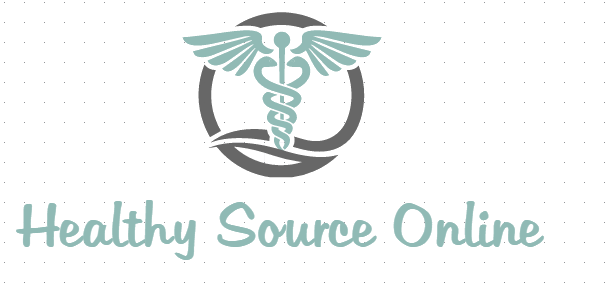[ad_1]
Contributed by: Priyaish Srivastava
Introduction
Your lungs are one of the most important organs in your body as they help you breathe and aid in the inhalation of oxygen as well as its transport to the heart. The lungs also act as a vacuum cleaner as they help in the removal of carbon dioxide and other potentially harmful gases from your body. The lungs, like any other organ, can be damaged by disease or afflicted by a serious medical condition. Here are the top five lung diseases along with their causes, symptoms, diagnosis, and treatment, and/or prevention for your understanding.
Asthma is a non-communicable and chronic respiratory disease that can affect both adults and children. When struck by asthma, your airways become inflamed, narrowed, and filled with mucus. According to the World Health Organization (WHO), asthma is the most common lung illness in the world, affecting 235 million people, of which 15 to 20 million live in India.
Causes of asthma
Asthma has no recognized cause, and the trigger might differ from person to person. However, some studies have found that asthma is a retaliation of your immune system to remove any harmful foreign substance from your lungs.
Asthma episodes can be brought on by a variety of causes. If you or a loved one suffers from asthma, you should be aware of the triggers. Once you understand what might trigger an asthma attack, you can take steps to prevent it or if hit, manage it. Here’s a rundown of what might set off an asthma attack:
-
-
-
-
-
-
-
-
- Allergies- a condition in which you become hypersensitive to any substance like any specific foods or allergens
- Viral or bacterial infection (cold or flu)
- Environmental factors like pollen, dust, pollution, and cockroaches
- Strenuous physical activities and high-impact sports
- Smoking
- Stress
-
-
-
-
-
-
-
Symptoms of asthma
-
-
-
-
-
-
-
-
- Breathing problems & shortness of breath
- Whistle type sound while breathing (wheezing)
- Pain or pressure in the chest
- Continuous coughing especially during the night and early mornings
- Extreme tiredness
- Concentration problems
-
-
-
-
-
-
-
Asthma diagnosis
-
-
-
-
-
-
-
-
- FeNO test: It is a simple test in which the diagnostician will ask you to blow into a machine to measure the nitric oxide levels in your lungs. The presence of nitric oxide is a tell-tale sign of lungs inflammation.
- Spirometry: Another blow-in-the-machine asthma test, spirometry determines the oxygen holding capacity of your lungs.
-
-
-
-
-
-
-
Prevention and treatment of asthma
Although asthma does not have a definitive cure, it may be managed with prescription medication and avoiding asthma triggers. Here are a few tips that may help you control the condition:
Prevention
-
-
-
-
-
-
-
-
- Identify what triggers your asthma and take measures to avoid it
- Quit smoking
- Lifestyle changes: A healthy diet and exercising regularly
-
-
-
-
-
-
-
Treatment/management
-
-
-
-
-
-
-
-
- Using prescribed quick-relief inhalers. They help in relaxing the tightened muscles and ease the breathing process
- Breathing exercises. This will increase your lung capacity and improve your respiratory cycle
-
-
-
-
-
-
-
Lung cancer
Lung cancer is caused by uncontrolled cell division in the lungs. It is the leading cause of fatalities from cancer in both men and women globally and accounting for 9.3% of cancer deaths in India.
Causes of lung cancer
-
-
-
-
-
-
-
-
- Smoking: Smoking is the leading cause of lung cancer. Chances are the earlier you begin, the longer you will smoke, and the greater will be your risk of getting cancer. Quitting the habit, on the other hand, can lower the odds of being afflicted by this often deadly cancer type.
- Secondhand smoke: Also known as passive smoking – when a non-smoker inhales the cigarette smoke that the smoker exhales, it puts him/her at greater risk of lung damage.
- Air pollution: Pollutant particles that come from fossil fuels or smoke and toxic air chemicals from industrial plants can also cause lung cancer.
-
-
-
-
-
-
-
Symptoms of lung cancer
In some cases, lung cancer can remain asymptomatic and can be identified only via lung cancer diagnosis. The following symptoms can present themselves if you are affected by lung cancer:
-
-
-
-
-
-
-
-
- Pain or discomfort in your chest
- Shortness of breath and trouble breathing
- Coughing blood
- Upper respiratory infections that cause hoarseness (when your voice sounds breathy)
- Unwillingness to eat and unintended weight loss
- Swollen face and neck veins
-
-
-
-
-
-
-
Lung cancer diagnosis
-
-
-
-
-
-
-
-
- Image testing: This method includes CT scan, PET scan, MRI, and bone scan.
- Biopsy: The doctor will collect tissue samples from your lungs by making a small incision to diagnose lung cancer.
- Bronchoscopy: The doctor will insert a small and flexible pipe mounted with light and camera through your nose into your lungs. Post-which, the doctor will put instruments into the pipe to obtain fluid or tissue samples from your lungs for testing in the lab.
-
-
-
-
-
-
-
Prevention and treatment of lung cancer
To prevent yourself from lung cancer, do not smoke in the first place or quit immediately, and avoid secondhand or passive smoke. Dietary changes may also help manage the condition. Here are a few recommendations that may help you in the prevention and treatment of lung cancer:
Prevention
-
-
-
-
-
-
-
-
- Quit smoking
- Yoga
- Breathing exercises
- Lifestyle changes
-
-
-
-
-
-
-
Treatment/management
-
-
-
-
-
-
-
-
- Treatments include surgery, radiotherapy, chemotherapy, and immunotherapy
- Acupuncture
- Aromatherapy
- Fruits like oranges, papaya, and carrots may help manage the condition
- Green vegetables like spinach, beans, kale (gobhi), and folate enrich foods can also help manage the condition
-
-
-
-
-
-
-
Chronic bronchitis is a non-reversible condition in which you cough for an extended period of time. Because the bacterium never completely exits your body, this disease continues to recur. If you have been coughing for a long period, it might be a sign of chronic bronchitis. COPD (chronic obstructive pulmonary disease) is a group of diseases that include chronic bronchitis. It’s a lung illness that makes it difficult to breathe, and the condition worsens with time.
Causes of bronchitis
-
-
-
-
-
-
-
-
- Tobacco smoking is the number one cause of chronic bronchitis
- Passive smoking or secondhand smoking
- Dust and allergies
- Air pollution
- Smoke from burning coal or chimney smoke from factories
- Asthma and related complications
-
-
-
-
-
-
-
Symptoms of bronchitis
-
-
-
-
-
-
-
-
- Continuous coughing with mucus
- Whistle sound while breathing (wheezing)
- Shortness of breath
- Chest tightness
-
-
-
-
-
-
-
Chronic bronchitis diagnosis
-
-
-
-
-
-
-
-
- The doctor will ask you about the symptoms or if you have a family history of chronic bronchitis
- The doctor can also recommend additional tests like CT scan, X-ray, blood tests, or liver function test (LFT) to diagnose the condition
-
-
-
-
-
-
-
Prevention and treatment of chronic bronchitis
Prevention
-
-
-
-
-
-
-
-
- Quit smoking and start living a healthy lifestyle
- Avoid exposure to lung irritants like toxic fumes
- Wear a mask
- Stay away from secondhand or passive smoke
-
-
-
-
-
-
-
Treatment
-
-
-
-
-
-
-
-
- Take prescribed medications to clear mucus
- Undergo a lung reduction surgery to remove the affected area of the lungs (if recommended by the doctor)
- Lung transplant (rare cases)
-
-
-
-
-
-
-
Pneumonia
Pneumonia is a contagious illness that causes breathing issues by inflaming the air sacs in the lungs and filling them with fluid or pus. Antibiotics can be used to treat infections caused by fungus, bacteria, or viruses, and are an effective way to treat pneumonia.
Causes of pneumonia
-
-
-
-
-
-
-
-
- Flu causing viruses
- Cold causing viruses
- RSV virus
- Streptococcus pneumoniae and mycoplasma pneumoniae bacteria
-
-
-
-
-
-
-
Symptoms of pneumonia
-
-
-
-
-
-
-
-
- Cough with mucus
- Chest pain while coughing or breathing
- Fever
- Loss of hunger
- Headache, vomiting, and nausea
- Fast breathing or wheezing
- Frequent episodes of sweat and chills
-
-
-
-
-
-
-
Pneumonia diagnosis
-
-
-
-
-
-
-
-
- Chest X-ray
- CT scan
- Blood test
- Sputum test (testing of your cough)
- Measuring the oxygen level
- Bronchoscopy
-
-
-
-
-
-
-
Prevention and treatment of pneumonia
Prevention
-
-
-
-
-
-
-
-
- Quit smoking
- Wash your hands regularly with soap
- Cover your face when coughing or sneezing
- Strengthen your immunity by maintaining a healthy lifestyle
-
-
-
-
-
-
-
Treatment
-
-
-
-
-
-
-
-
- Oral antibiotics
- Get vaccinated against pneumonia
- Get flu vaccines
- Get HIB vaccines
-
-
-
-
-
-
-
Tuberculosis (TB) is an airborne communicable illness that is primarily caused by a bacteria called mycobacterium tuberculosis (MTB) which not only affects your lungs but also the brain, spine, and kidneys. It can transmit by inhaling contagious aerosol droplets that travel from an infected person’s sneeze or cough.
Research conducted by the WHO in 2019 showed that there are approximately 10 million people worldwide who are infected with tuberculosis, and India alone accounts for about 2.64 million cases.
Causes of tuberculosis
-
-
-
-
-
-
-
-
- Living in a contaminated environment
- Prolonged close contact with a TB infected person
- Smoking (particularly chain-smoking)
- Air pollution
- Cancer
- If you are a health care worker and have exposure to TB samples
- Poor health and hygiene
- Weak immune system
-
-
-
-
-
-
-
Symptoms of tuberculosis
-
-
-
-
-
-
-
-
- Coughing for three weeks or longer
- Chest pain when laughing, breathing, coughing, and sneezing
- Fever and chills
- Night sweats
- Unexpected weight loss
- Coughing mucus or blood
- Weakness, unwillingness to eat, and fatigue
-
-
-
-
-
-
-
Tuberculosis diagnosis
-
-
-
-
-
-
-
-
- CT scan, MRI scan, and ultrasound
- Endoscopy and laparoscopy
- Urine and blood test
- Lung biopsy
-
-
-
-
-
-
-
Prevention and treatment of tuberculosis
Prevention
-
-
-
-
-
-
-
-
- Wash your hands regularly
- Cover your face while coughing or sneezing
- Avoid close contact with infected persons
- Quit smoking
-
-
-
-
-
-
-
Treatment/management
-
-
-
-
-
-
-
-
- Seek medical attention and take medication as prescribed
- Self-isolate if you experience the symptoms
- Live in a room with cross ventilation
-
-
-
-
-
-
-
Final thoughts
Ignoring lung disease symptoms can cause serious health complications and may even lead to death. However, early detection and prevention, on the other hand, can aid in the treatment and management of the illness.
Book The Full Body Health Checkup Today!
This post has already been read 2 times!
[ad_2]
Source link




